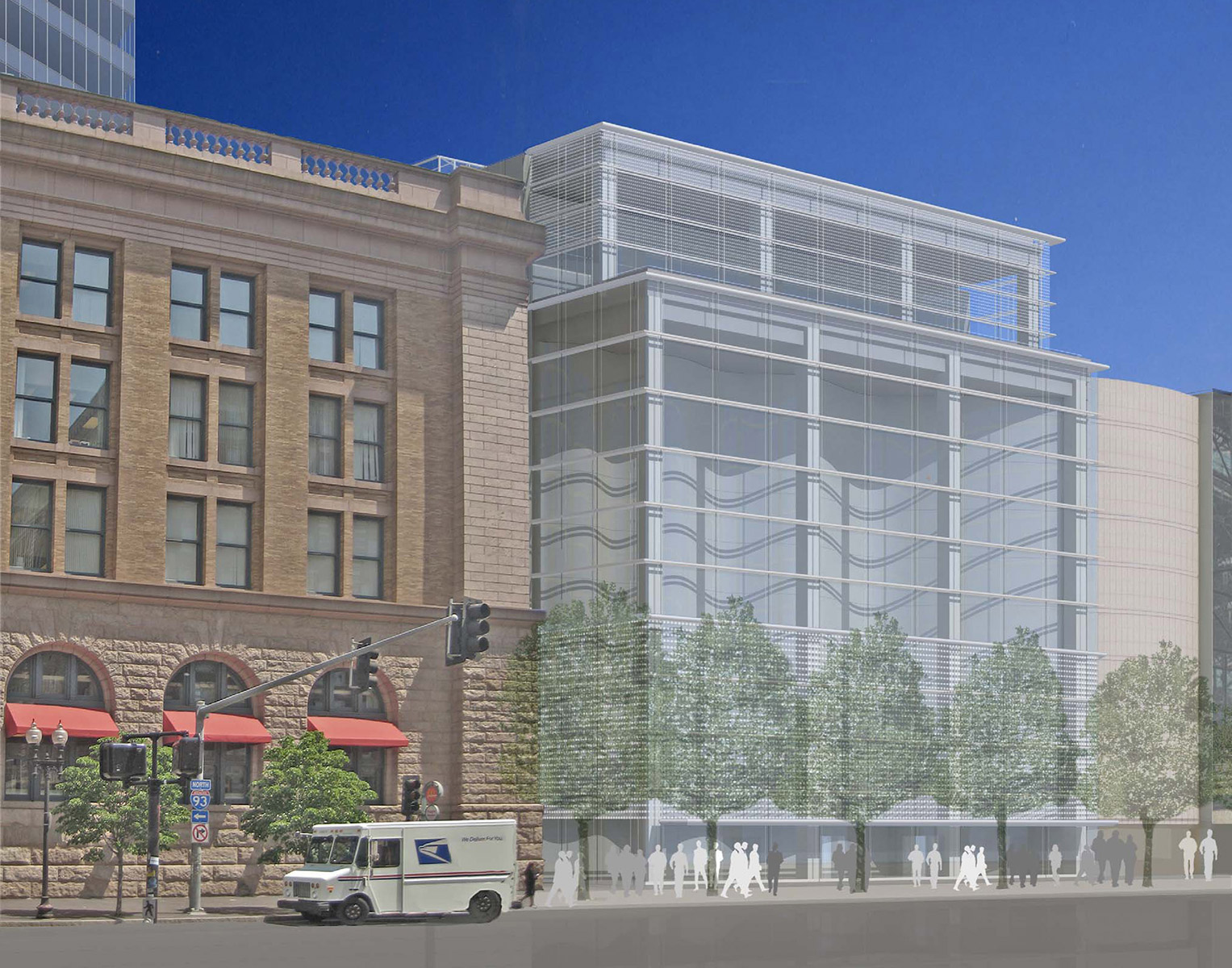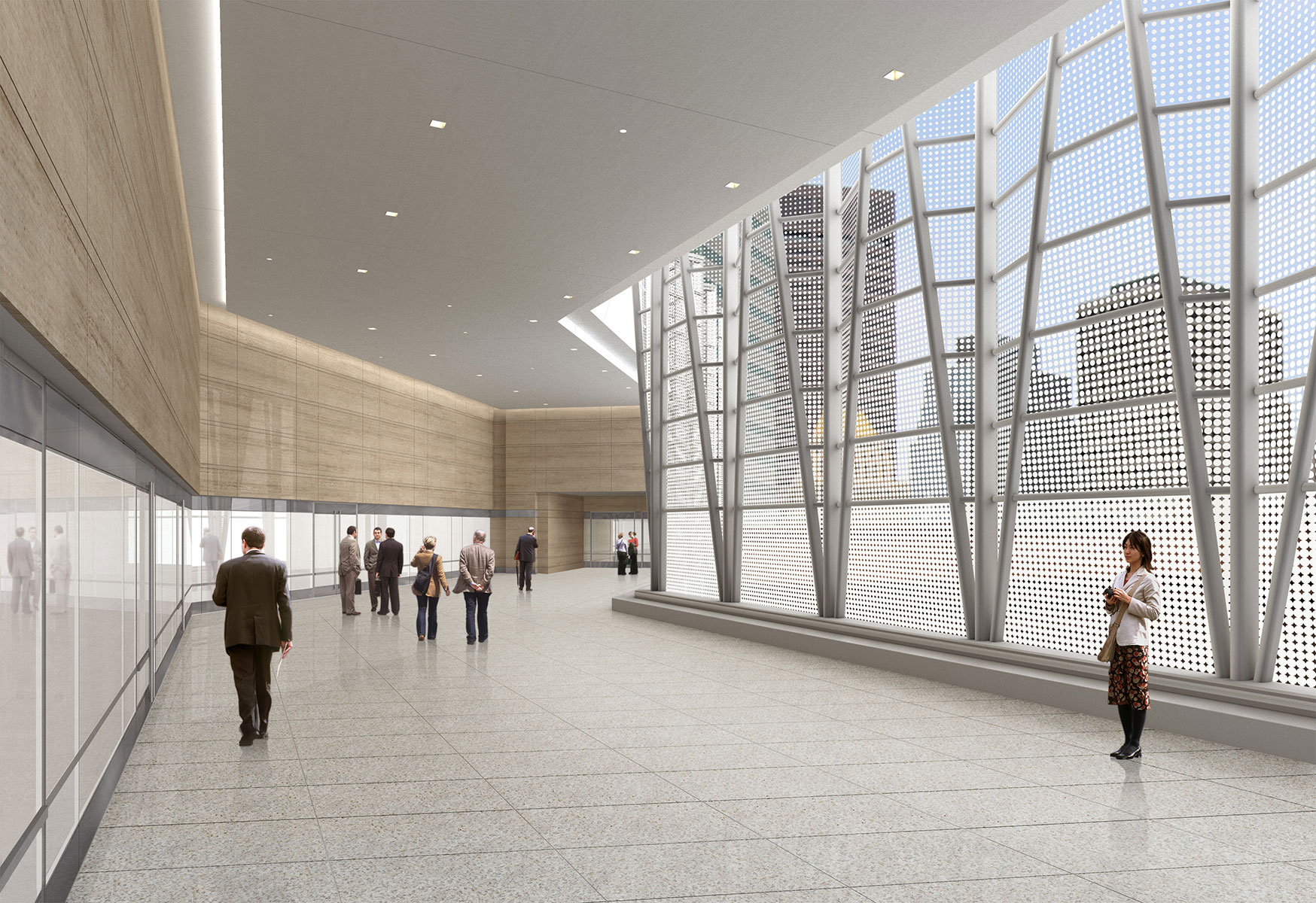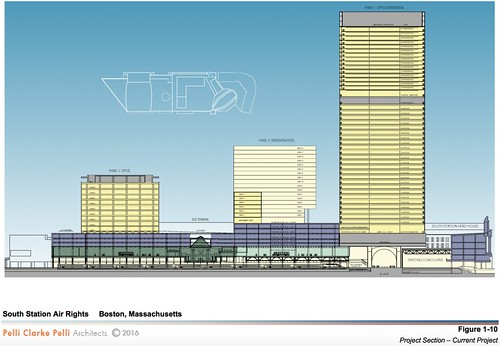Re: South Station Tower
NSRL and South Station berth expansion solve separate commuter rail issues.
SS needs more berthing space that NSRL can provide. Many trains will not through run. You can never get DMU/EMU inner region service without more berths for trains.
NSRL is primarily a network connectivity fix, not a train slot fix.
I beg to differ, Jeff, it DIRECTLY affects footprint issues, I agree, perhaps not all, but it would still save alot of important footprint space:
http://www.northsouthraillink.org/capacity/
"....South Station’s 13 tracks currently handle about 320 revenue trips per day, plus an additional 129 non-revenue trips per day that are required primarily due to the inherent inefficiency of a stub end terminal. With this antiquated arrangement,
nearly 30% of all train movements in and out of South Station produce no revenue and no transportation benefit, while tying up equipment and crews, and even more importantly,
valuable urban land that could be far better used....
How is this performance discrepancy possible? MassDOT’s 2013 Fact Sheet for the South Station Expansion Project is remarkably direct in assessing the root cause of terminal congestion, namely that:
“South Station is a terminal station – literally the end of the line. This means that trains do not pass through but instead have to pull in and pull out of the station. For every one train, two movements are needed – one entering and one leaving the station. This only increases the complexity of managing the station.” [South Station Expansion DEIR]
Plan of proposed development on the US Post Office site adjacent to South Station (Shmessy: Baker's current favorite, non-NSRL proposal), showing that m
uch of this very expensive waterfront site will be devoted to parking trains (new platforms are shown in orange), wiping out about 550,000 sf of useable area, and greatly complicating the construction process. The MBTA conceded in January 2015 that, as a result, the development is unlikely to make any financial contribution toward the cost of South Station Expansion.
Rather than addressing the root cause of this gross inefficiency, the Commonwealth is currently planning to add 7 additional stub-end tracks at South Station and 2 more at North Station, at a staggering cost of about $2 Billion. Leaving aside the cost, the addition of surface tracks simply compounds the inefficiency of the stub-end operations and adds precious little capacity for future growth. Rather than solving the underlying problem, this approach simply compounds it.
The difference between through-service and stub-end service can be compared to the difference between a bucket brigade and a water pipe. In the latter there is nearly continuous flow, with no reversing. In the former, half of the movements are wasted.
Summary of capacity needs and constraints at South Station in Boston. Note that South Station is at capacity with just 320 revenue trips per day, while Philadelphia's downtown through-stations carry more than twice as many revenue trips with less than 1/3 as many tracks, and with capacity to spare. [MBTA South Station Expansion Project DEIR, Oct. 2014, p. 2-6]
We don’t have to look to Philadelphia for confirmation of this. Our own 2-track Red Line stations are able to carry as many passengers per day as our 13 track stub-end terminal at South Station.
This can be explained by the “dwell times” and “headways” on the two systems – 25 minutes at the terminal, versus 3 to 4 minutes, or even less, for the run-through subway lines.
It is obvious from this example, and amply confirmed by the experience of the many cities that have built and are building run-through systems, that unification produces far more capacity than terminal expansion. And it does this
while reducing the footprint of surface rail and improving service system-wide...."



















